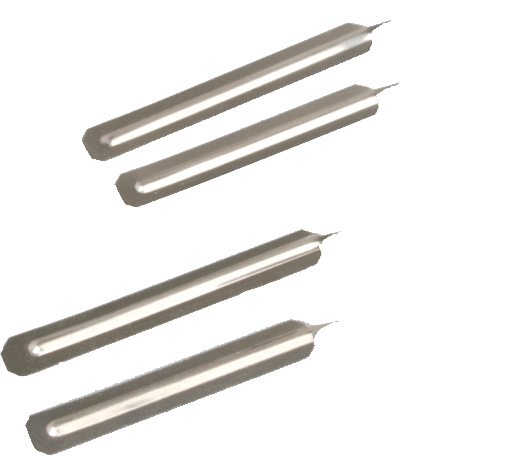
We have Stainless Steel Blood Lancet- NME000101 production and sale, NME000177, Square end with hole end ridge concave with side blood lancets available.
| Ref. No.: | Description: |
|---|---|
| NME000101 | Large, smooth concave and sides |
| NME000102 | Small, smooth concave and sides |
The Stainless Steel Blood Lancet is a small, handheld device that is used to puncture the skin and collect a small sample of blood. It is typically used by healthcare professionals to test for various conditions and diseases.
The lancet consists of a small, sharp blade that is covered with a sterile protective cap. To use the lancet, the healthcare professional removes the cap and then presses the lancet against the skin. The blade punctures the skin and collects a small sample of blood. The Stainless Steel Blood Lancet is a simple and effective way to collect a small sample of blood. It is safe for both healthcare professionals and patients.
There are two main types of blood lancets: stainless steel and disposable. Both types have their own advantages and disadvantages. Stainless steel blood lancets are more expensive than disposable lancets, but they can be reused multiple times. This makes them more environmentally friendly than disposable lancets. Stainless steel lancets also tend to be more comfortable to use since they are less likely to cause irritation. However, they can be difficult to sterilize and may require special cleaners.
Disposable blood lancets are less expensive than stainless steel lancets and are more convenient since they don't need to be sterilized. However, they can be less comfortable to use and may cause more irritation. They are also not as environmentally friendly since they cannot be reused. Ultimately, the decision of which type of blood lancet to buy depends on personal preferences and budget.
There are several reasons why you should buy the Stainless Steel Blood Lancet. First of all, it is a very precise and accurate tool. It can be used to take small samples of blood, and it is very easy to control. Second, the lancet is made of stainless steel, which makes it durable and long-lasting. Third, the lancet comes with a Protective Sheath, which makes it safe to use.
Fourth, the lancet is easy to clean and sterilize. Finally, the lancet is very affordable. Overall, the Stainless Steel Blood Lancet is a great product that is both accurate and affordable.
The stainless steel blood lancet is a small, handheld device that is used to prick the skin and collect a small blood sample. It consists of a sharp needle that is covered by a plastic sheath. The needle is attached to a finger grip that helps the user to hold the lancet steady while it is in use. To use the lancet, the user removes the plastic sheath and places the lancet against their skin.
They then press the finger grip, which causes the needle to puncture the skin and collect a small blood sample. The blood sample is then collected on a test strip or in a vial for further testing. The stainless steel blood lancet is a simple and effective way to collect a small blood sample. It is easy to use and can be done quickly and with minimal discomfort.
The Stainless Steel Blood Lancet is a new type of lancet that is designed to make taking blood samples easier. The lancet has a sharp stainless steel tip that is used to puncture the skin. The lancet also has a protective sheath that covers the tip when it is not in use. This helps to prevent accidental punctures. The Stainless Steel Blood Lancet is easy to use.
To take a blood sample, simply remove the protective sheath and press the tip against the skin. The lancet will puncture the skin and collect a blood sample. The entire process takes only a few seconds. The Stainless Steel Blood Lancet is also easy to clean. After taking a blood sample, simply remove the sheath and rinse the lancet with soap and water. The lancet can be reused multiple times. The Stainless Steel Blood Lancet is an invention that will make taking blood samples easier. It is easy to use and easy to clean, making it an ideal tool for healthcare professionals.